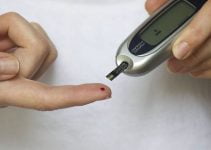Many different options are available for contraception nowadays, and different methods will suit some people better than others. Have you been thinking about contraception that you can use after giving birth? If so, you can find some useful information below as this article will highlight the best choices for contraception after having a baby.
After giving birth, there is no doubt that sex will be the last thing on your mind, but your body can actually be fertile within twenty-one days.
Contraception must be discussed with your healthcare practitioner as early as one week after you have a baby even if you are not planning to have sex for a while.
This is important because some contraception methods must be in use for three to four weeks in order for them to be effective. Knowing your options, considering your preferences, and then discussing the matter with your partner will put you in a good position for when you are ready.
How Early Can You Conceive After Giving Birth?
It is very unlikely for you to get pregnant within the first twenty-one days after having a baby, which means you will not need a contraception method.
After this portion of time, however, you could become pregnant even prior to having your first period.
Your body can change after you have a baby and the contraception that you were using before might not work for you at this time, which is another reason to consider different contraceptives.
In addition, there will be other factors to consider, especially if you are breastfeeding.
Best Choices for Contraception after Having a Baby
There are barrier methods which prevent sperm from physically reaching the egg. The following methods will not affect your hormones, have any major side effects, or interfere with breastfeeding.
Male condom: This is a thin tube-like covering that is made from polyurethane or latex to fit over an erect penis and trap semen or sperm during sex. A condom will provide significant protection against the human immunodeficiency virus (HIV) and other sexually transmitted infections (STIs).
Unlike most contraceptives, condoms can be used by you and your partner when you are ready to have sex. Even if you do not want to depend on condoms for the long term, they can be used while you are waiting to start the birth control method of your choice.
Female condom: This is a thin polyurethane pouch that you insert into your vagina prior to having sex to get protection against STIs and to prevent pregnancy.
There are soft rings at each end that help keep the pouch secure. You can use these condoms once you are ready to have sex again.
Cervical cap: This is a silicone cup with a sailor hat shape. To use, you would fill the cap partially with spermicide and then insert it into your vagina prior to having sex.
It will fit over the cervix to block sperm or semen from entering the uterus. You can use this contraceptive ten weeks after you have given birth.
Diaphragm: This is a shallow device with a dome shape that you can fill partially with spermicide and then insert into the vagina before having sexual intercourse. It will keep sperm from entering your cervix. You can fit a diaphragm with the help of your caregiver at your postpartum visit after six weeks.
Intrauterine device: You can use this contraceptive within forty-eight hours of having a baby. If not, it has to be fitted four weeks after you give birth, whether you had a caesarean section or a vaginal birth.
In addition to the barrier methods, there are hormonal options that are also available. These birth control options use artificial hormones to subdue ovulation, make the uterine lining thin so that the egg cannot be implanted, and thicken the cervical mucus to stop sperm from getting to the egg.
These are available only by prescription and are very effective in preventing pregnancy, even though they provide no protection against sexually transmitted infections.
You should wait for four weeks after giving birth to use methods with estrogen such as the combination birth control pill, the patch, and the ring because estrogen will increase your risk of having blood clots in the early postpartum period.
These are not recommended for women who are nursing until their milk has developed properly because estrogen can reduce the quality and quantity of breast milk.
When it comes to contraception, there are many options available for women. You can even choose a method that can be stopped easily for your body to return to normal if you are planning to have more children. If you believe that your family is complete, then you can discuss sterilization or the long-acting methods.
You need to consult your practitioner to know which contraception is right for you after giving birth at some point during your pregnancy or as early as one week after you have a baby.
You might be able to use your previous birth control method or you might have to choose a new option that will work even better for you.
In any case, it will be good to have a plan for contraception after having a baby before resuming your sexual activities.



